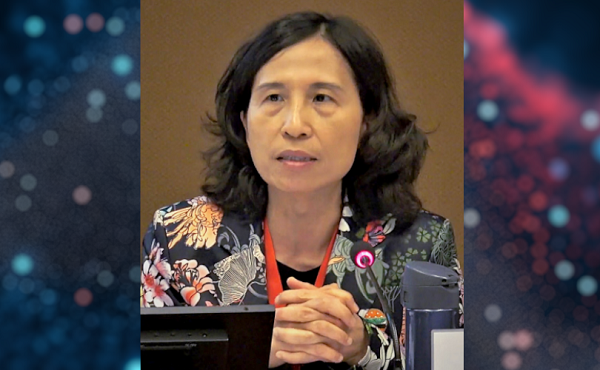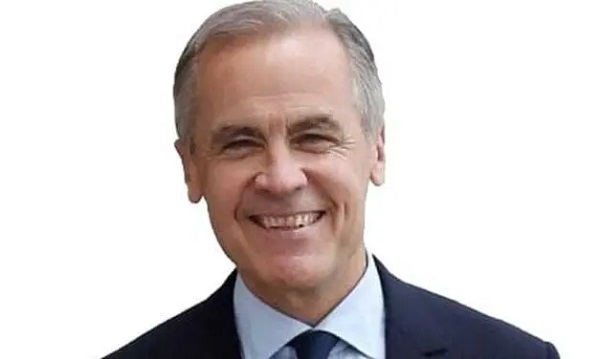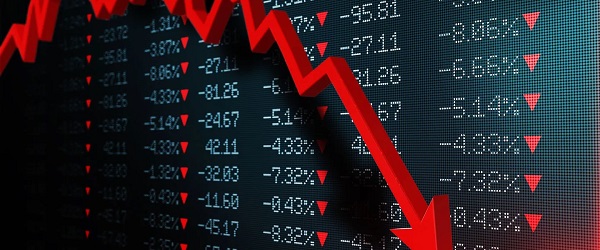Health
How the once-blacklisted Dr. Jay Bhattacharya could help save healthcare
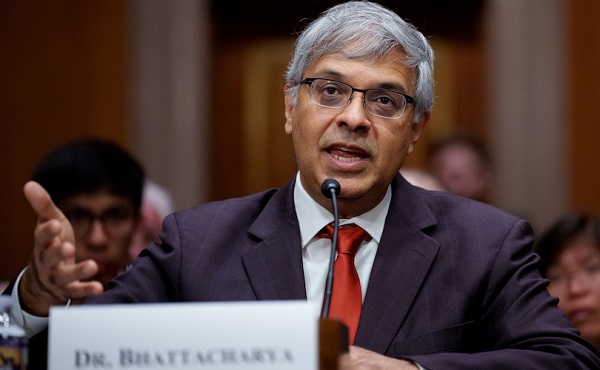
From LifeSiteNews
Now seated at the helm of the National Institutes of Health, Dr. Jay Bhattacharya is poised to reshape not only the agency’s research priorities but the very culture that pushed him to the fringe.
Imagine spending your career studying infectious diseases, only to find that the real virus spreading uncontrollably is censorship. That was the reality for Dr. Jay Bhattacharya, a Stanford epidemiologist who committed the unpardonable sin of questioning the COVID-19 lockdown orthodoxy. His punishment? Digital exile, courtesy of Silicon Valley’s Ministry of Truth.
In December 2022, the Twitter Files exposed what many had long suspected: Twitter had quietly placed Bhattacharya’s account on a Trends Blacklist. This ensured that his posts, often critical of lockdowns and mask mandates, would never see the light of day on the platform’s trending topics. In other words, Twitter’s algorithm worked like a digital bouncer, making sure his dissenting opinions never made it past the velvet rope.

And Twitter wasn’t alone. Facebook, ever eager to please its government handlers, scrubbed the Great Barrington Declaration from its pages. That document, co-authored by Bhattacharya and other esteemed scientists, dared to suggest that maybe, just maybe, locking down entire populations wasn’t the best strategy. Instead, it proposed focused protection for the most vulnerable while allowing the rest of society to function. For this, it was sent to the digital equivalent of a gulag.
These experiences took center stage during Bhattacharya’s Senate confirmation hearing for the directorship of the National Institutes of Health (NIH). Republican lawmakers, who suddenly found themselves cast as the last defenders of free speech in scientific discourse, saw his nomination as a win.
During his testimony, Bhattacharya didn’t mince words. He detailed how the Biden administration played an active role in orchestrating the suppression of alternative views. It wasn’t enough for officials to push their own pandemic policies — they needed to ensure that no one, regardless of expertise, could challenge them in the public square.
The Science™ vs. The Science
Bhattacharya’s testimony laid bare an uncomfortable truth: the pandemic was a crisis of speech. “The root problem was that people who had alternative ideas were suppressed,” he told Sen. Ashley Moody (R-Fla.). “I personally was subject to censorship by the actions of the Biden administration during the pandemic.”
In a functioning society, that statement would spark bipartisan outrage. Instead, it barely registered. The people who spent years chanting “trust the science” were never interested in science at all.
Real science thrives on debate, skepticism, and the understanding that no single expert — no matter how credentialed—holds absolute truth. But during COVID, science became The Science™ — a government-approved doctrine enforced by Silicon Valley moderators and federal bureaucrats. Deviate from it, and you weren’t just wrong. You were dangerous.
A government-sanctioned muzzle
Bhattacharya wasn’t silenced in some haphazard, accidental way. The Biden administration actively leaned on social media companies to “moderate” voices like his. In practice, that meant tech executives — most of whom couldn’t tell a virus from a viral tweet — decided which epidemiologists the public was allowed to hear.
He responded with a lawsuit against the administration, accusing it of colluding with Big Tech to crush dissent. But in a ruling as predictable as it was revealing, the Supreme Court dismissed the case, arguing that Bhattacharya and his fellow plaintiffs lacked standing. Meaning: Yes, the government may have pressured private companies into silencing critics, but unless you can prove exactly how that harmed you, don’t expect the courts to care.
The real role of science
Despite everything, Bhattacharya didn’t argue for scientists to dictate policy. Unlike the public health bureaucrats who spent the pandemic issuing commandments from their Zoom thrones, he made it clear: “Science should be an engine for freedom,” he said. “Not something where it stands on top of society and says, ‘You must do this, this or this, or else.’”
That distinction matters. Science informs, but policy is about trade-offs. The problem wasn’t that officials got things wrong — it’s that they refused to admit the possibility. Instead of allowing open debate, they silenced critics. Instead of acknowledging uncertainty, they imposed rules with absolute certainty.
Bhattacharya wasn’t censored because he was wrong. He was censored because he questioned people who couldn’t afford to be.
His confirmation hearing made one thing clear: science wasn’t about data. It was about power. And in Washington, power doesn’t like to be questioned.
Science, money and power
At the heart of the hearing was a fundamental question: Who controls science that people are allowed to talk about? The NIH, with its $48 billion budget, is less a research institution and more a financial leviathan, shaping the direction of American science through the projects it funds (or doesn’t) fund.
Bhattacharya’s nomination comes at a moment when the battle lines around scientific freedom, government intervention, and public trust in research are more entrenched than ever. The pandemic shattered the illusion that science was above politics. Instead, it exposed just how much political and corporate interests shape what counts as “settled” science.
The irony is thick enough to cut with a knife. The man once branded too dangerous for social media, blacklisted for questioning lockdowns, and effectively erased from mainstream discourse is now being handed a key role in the very government that tried to silence him. Dr. Jay Bhattacharya, once forced to the margins, is now at the center of power.
A new administration has decided that maybe — just maybe — silencing dissenting scientists wasn’t the best pandemic strategy. And in a twist no Hollywood scriptwriter would dare to pitch for being too on-the-nose, Bhattacharya wasn’t being welcomed back into the conversation — he’s being put in charge of it.
Bhattacharya was confirmed following a party-line vote Tuesday evening. The decision came after a similarly partisan endorsement from the Senate Committee on Health, Education, Labor and Pensions (HELP), clearing the final hurdle for President Donald Trump’s nominee.
Equally central to his testimony was Bhattacharya’s call for a sweeping shift in NIH priorities. He proposed a decentralization of research funding, stressing the need for greater inclusion of dissenting voices in the scientific process, an apparent rebuke of the consensus-driven culture that dominated during the pandemic. He emphasized targeting resources toward projects with a clear and measurable impact on public health, dismissing other NIH initiatives as “frivolous.”
Now seated at the helm of the National Institutes of Health, Dr. Jay Bhattacharya is poised to reshape not only the agency’s research priorities but the very culture that pushed him to the fringe. His confirmation, hard-won and unapologetically political, is already shaking the scaffolding of a scientific establishment that long equated conformity with consensus.
Reprinted with permission from Reclaim The Net.
Addictions
‘Over and over until they die’: Drug crisis pushes first responders to the brink

First responders say it is not overdoses that leave them feeling burned out—it is the endless cycle of calls they cannot meaningfully resolve
The soap bottle just missed his head.
Standing in the doorway of a cluttered Halifax apartment, Derek, a primary care paramedic, watched it smash against the wall.
Derek was there because the woman who threw it had called 911 again — she did so nearly every day. She said she had chest pain. But when she saw the green patch on his uniform, she erupted. Green meant he could not give her what she wanted: fentanyl.
She screamed at him to call “the red tags” — advanced care paramedics authorized to administer opioids. With none available, Derek declared the scene unsafe and left. Later that night, she called again. This time, a red-patched unit was available. She got her dose.
Derek says he was not angry at the woman, but at the system that left her trapped in addiction — and him powerless to help.
First responders across Canada say it is not overdoses that leave them feeling burned out — it is the endless cycle of calls they cannot meaningfully resolve. Understaffed, overburdened and dispatched into crises they are not equipped to fix, many feel morally and emotionally drained.
“We’re sending our first responders to try and manage what should otherwise be dealt with at structural and systemic levels,” said Nicholas Carleton, a University of Regina researcher who studies the mental health of public safety personnel.
Canadian Affairs agreed to use pseudonyms for the two frontline workers referenced in this story. Canadian Affairs also spoke with nine other first responders who agreed to speak only on background. All of these sources cited concerns about workplace retaliation for speaking out.
Moral injury
Canada’s opioid crisis is pushing frontline workers such as paramedics to the brink.
A 2024 study of 350 Quebec paramedics shows one in three have seriously considered suicide. Globally, ambulance workers have among the highest suicide rates of public service personnel.
Between 2017 and 2024, Canadian paramedics responded to nearly 240,000 suspected opioid overdoses. More than 50,000 of those were fatal.
Yet many paramedics say overdose calls are not the hardest part of the job.
“When they do come up, they’re pretty easy calls,” said Derek. Naloxone, a drug that reverses overdoses, is readily available. “I can actually fix the problem,” he said. “[It’s a] bit of instant gratification, honestly.”
What drains him are the calls they cannot fix: mental health crises, child neglect and abuse, homelessness.
“The ER has a [cardiac catheterization] lab that can do surgery in minutes to fix a heart attack. But there’s nowhere I can bring the mental health patients.
“So they call. And they call. And they call.”
Thomas, a primary care paramedic in Eastern Ontario, echoes that frustration.
“The ER isn’t a good place to treat addiction,” he said. “They need intensive, long-term psychological inpatient treatment and a healthy environment and support system — first responders cannot offer that.”
That powerlessness erodes trust. Paramedics say patients with addictions often become aggressive, or stop seeking help altogether.
“We have a terrible relationship with the people in our community struggling with addiction,” Thomas said. “They know they will sit in an ER bed for a few hours while being in withdrawals and then be discharged with a waitlist or no follow-up.”
Carleton, of the University of Regina, says that reviving people repeatedly without improvement decreases morale.
“You’re resuscitating someone time and time again,” said Carleton, who is also director of the Psychological Trauma and Stress Systems Lab, a federal unit dedicated to mental health research for public safety personnel. “That can lead to compassion fatigue … and moral injury.”
Katy Kamkar, a clinical psychologist focused on first responder mental health, says moral injury arises when workers are trapped in ethically impossible situations — saving a life while knowing that person will be back in the same state tomorrow.
“Burnout is … emotional exhaustion, depersonalization, and reduced personal accomplishment,” she said in an emailed statement. “High call volumes, lack of support or follow-up care for patients, and/or bureaucratic constraints … can increase the risk of reduced empathy, absenteeism and increased turnover.”
Kamkar says moral injury affects all branches of public safety, not just paramedics. Firefighters, who are often the first to arrive on the scene, face trauma from overdose deaths. Police report distress enforcing laws that criminalize suffering.
Understaffed and overburdened
Staffing shortages are another major stressor.
“First responders were amazing during the pandemic, but it also caused a lot of fatigue, and a lot of people left our business because of stress and violence,” said Marc-André Périard, vice president of the Paramedic Chiefs of Canada.
Nearly half of emergency medical services workers experience daily “Code Blacks,” where there are no ambulances available. Vacancy rates are climbing across emergency services. The federal government predicts paramedic shortages will persist over the coming decade, alongside moderate shortages of police and firefighters.
Unsafe work conditions are another concern. Responders enter chaotic scenes where bystanders — often fellow drug users — mistake them for police. Paramedics can face hostility from patients they just saved, says Périard.
“People are upset that they’ve been taken out of their high [when Naloxone is administered] and not realizing how close to dying they were,” he said.
Thomas says safety is undermined by vague, inconsistently enforced policies. And efforts to collect meaningful data can be hampered by a work culture that punishes reporting workplace dangers.
“If you report violence, it can come back to haunt you in performance reviews” he said.
Some hesitate to wait for police before entering volatile scenes, fearing delayed response times.
“[What] would help mitigate violence is to have management support their staff directly in … waiting for police before arriving at the scene, support paramedics in leaving an unsafe scene … and for police and the Crown to pursue cases of violence against health-care workers,” Thomas said.
“Right now, the onus is on us … [but once you enter], leaving a scene is considered patient abandonment,” he said.
Upstream solutions
Carleton says paramedics’ ability to refer patients to addiction and mental health referral networks varies widely based on their location. These networks rely on inconsistent local staffing, creating a patchwork system where people easily fall through the cracks.
“[Any] referral system butts up really quickly against the challenges our health-care system is facing,” he said. “Those infrastructures simply don’t exist at the size and scale that we need.”
Périard agrees. “There’s a lot of investment in safe injection sites, but not as much [resources] put into help[ing] these people deal with their addictions,” he said.
Until that changes, the cycle will continue.
On May 8, Alberta renewed a $1.5 million grant to support first responders’ mental health. Carleton welcomes the funding, but says it risks being futile without also addressing understaffing, excessive workloads and unsafe conditions.
“I applaud Alberta’s investment. But there need to be guardrails and protections in place, because some programs should be quickly dismissed as ineffective — but they aren’t always,” he said.
Carleton’s research found that fewer than 10 mental health programs marketed to Canadian governments — out of 300 in total — are backed up by evidence showing their effectiveness.
In his view, the answer is not complicated — but enormous.
“We’ve got to get way further upstream,” he said.
“We’re rapidly approaching more and more crisis-level challenges… with fewer and fewer [first responders], and we’re asking them to do more and more.”
This article was produced through the Breaking Needles Fellowship Program, which provided a grant to Canadian Affairs, a digital media outlet, to fund journalism exploring addiction and crime in Canada. Articles produced through the Fellowship are co-published by Break The Needle and Canadian Affairs.
Business
Prime minister can make good on campaign promise by reforming Canada Health Act

From the Fraser Institute
While running for the job of leading the country, Prime Minister Carney promised to defend the Canada Health Act (CHA) and build a health-care system Canadians can be proud of. Unfortunately, to have any hope of accomplishing the latter promise, he must break the former and reform the CHA.
As long as Ottawa upholds and maintains the CHA in its current form, Canadians will not have a timely, accessible and high-quality universal health-care system they can be proud of.
Consider for a moment the remarkably poor state of health care in Canada today. According to international comparisons of universal health-care systems, Canadians endure some of the lowest access to physicians, medical technologies and hospital beds in the developed world, and wait in queues for health care that routinely rank among the longest in the developed world. This is all happening despite Canadians paying for one of the developed world’s most expensive universal-access health-care systems.
None of this is new. Canada’s poor ranking in the availability of services—despite high spending—reaches back at least two decades. And wait times for health care have nearly tripled since the early 1990s. Back then, in 1993, Canadians could expect to wait 9.3 weeks for medical treatment after GP referral compared to 30 weeks in 2024.
But fortunately, we can find the solutions to our health-care woes in other countries such as Germany, Switzerland, the Netherlands and Australia, which all provide more timely access to quality universal care. Every one of these countries requires patient cost-sharing for physician and hospital services, and allows private competition in the delivery of universally accessible services with money following patients to hospitals and surgical clinics. And all these countries allow private purchases of health care, as this reduces the burden on the publicly-funded system and creates a valuable pressure valve for it.
And this brings us back to the CHA, which contains the federal government’s requirements for provincial policymaking. To receive their full federal cash transfers for health care from Ottawa (totalling nearly $55 billion in 2025/26) provinces must abide by CHA rules and regulations.
And therein lies the rub—the CHA expressly disallows requiring patients to share the cost of treatment while the CHA’s often vaguely defined terms and conditions have been used by federal governments to discourage a larger role for the private sector in the delivery of health-care services.
Clearly, it’s time for Ottawa’s approach to reflect a more contemporary understanding of how to structure a truly world-class universal health-care system.
Prime Minister Carney can begin by learning from the federal government’s own welfare reforms in the 1990s, which reduced federal transfers and allowed provinces more flexibility with policymaking. The resulting period of provincial policy innovation reduced welfare dependency and government spending on social assistance (i.e. savings for taxpayers). When Ottawa stepped back and allowed the provinces to vary policy to their unique circumstances, Canadians got improved outcomes for fewer dollars.
We need that same approach for health care today, and it begins with the federal government reforming the CHA to expressly allow provinces the ability to explore alternate policy approaches, while maintaining the foundational principles of universality.
Next, the Carney government should either hold cash transfers for health care constant (in nominal terms), reduce them or eliminate them entirely with a concordant reduction in federal taxes. By reducing (or eliminating) the pool of cash tied to the strings of the CHA, provinces would have greater freedom to pursue reform policies they consider to be in the best interests of their residents without federal intervention.
After more than four decades of effectively mandating failing health policy, it’s high time to remove ambiguity and minimize uncertainty—and the potential for politically motivated interpretations—in the CHA. If Prime Minister Carney wants Canadians to finally have a world-class health-care system then can be proud of, he should allow the provinces to choose their own set of universal health-care policies. The first step is to fix, rather than defend, the 40-year-old legislation holding the provinces back.
-

 Indigenous2 days ago
Indigenous2 days agoInternal emails show Canadian gov’t doubted ‘mass graves’ narrative but went along with it
-

 Business2 days ago
Business2 days agoCarney’s new agenda faces old Canadian problems
-

 Bruce Dowbiggin2 days ago
Bruce Dowbiggin2 days agoEau Canada! Join Us In An Inclusive New National Anthem
-

 Daily Caller2 days ago
Daily Caller2 days agoBlackouts Coming If America Continues With Biden-Era Green Frenzy, Trump Admin Warns
-

 Daily Caller2 days ago
Daily Caller2 days ago‘I Know How These People Operate’: Fmr CIA Officer Calls BS On FBI’s New Epstein Intel
-
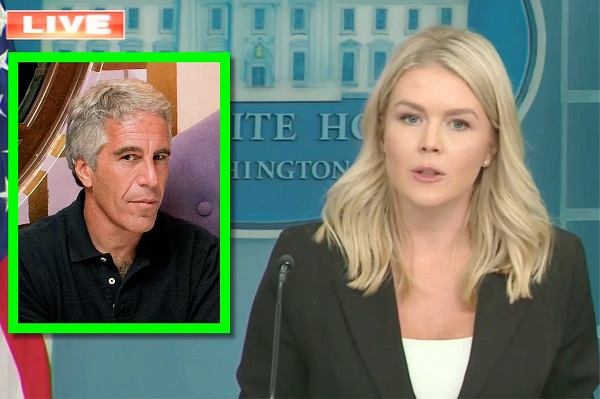
 Crime2 days ago
Crime2 days agoEyebrows Raise as Karoline Leavitt Answers Tough Questions About Epstein
-
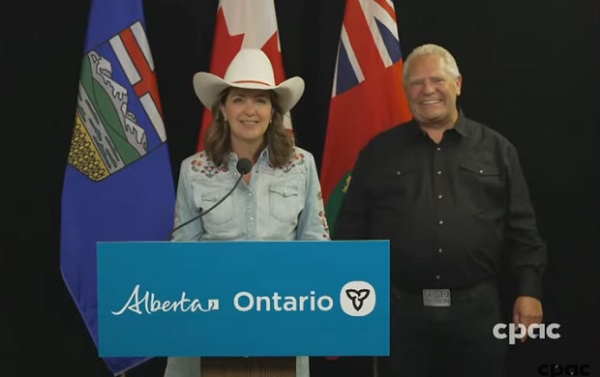
 Alberta2 days ago
Alberta2 days agoAlberta and Ontario sign agreements to drive oil and gas pipelines, energy corridors, and repeal investment blocking federal policies
-

 Alberta2 days ago
Alberta2 days agoCOWBOY UP! Pierre Poilievre Promises to Fight for Oil and Gas, a Stronger Military and the Interests of Western Canada


